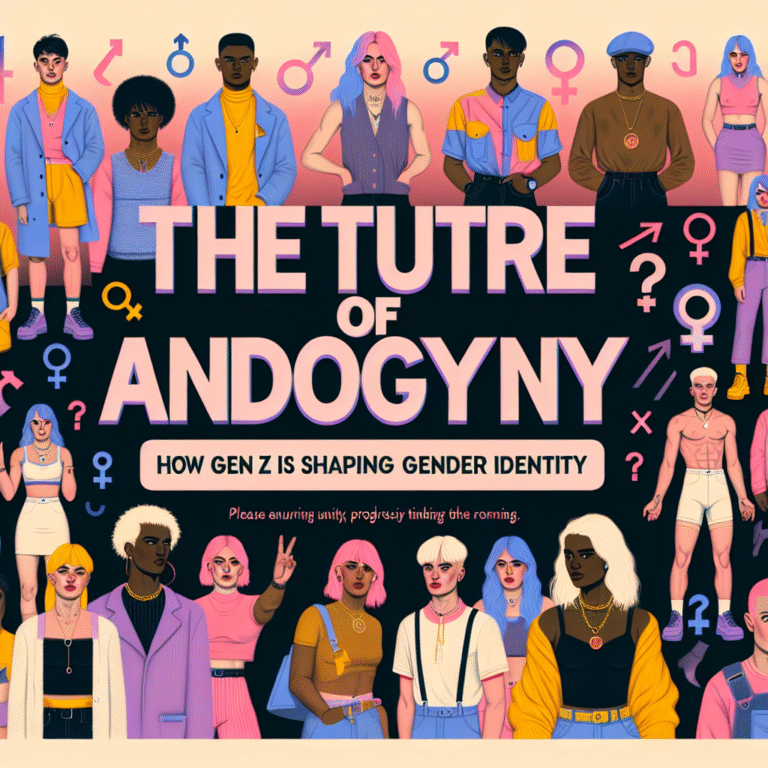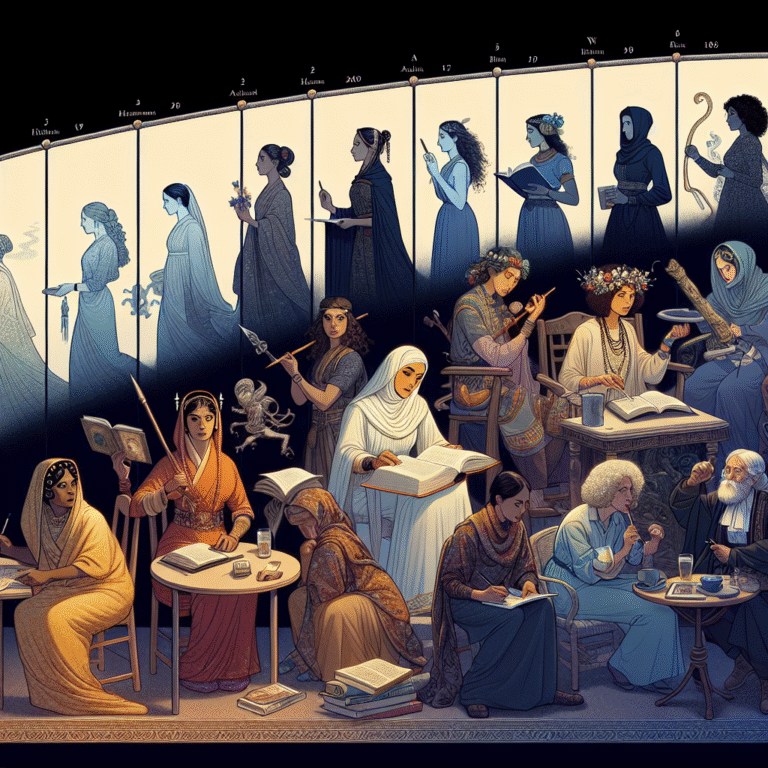
Introduction
In an age where content is just a click away, representation in media and pop culture plays a pivotal role in shaping societal perceptions and defining identity. One of the most impactful shifts in recent years has been the rise of non-binary representation, a movement that challenges traditional gender norms and embraces a spectrum of identities beyond the binary. The impact of non-binary representation in media and pop culture is not merely a trend; it signifies a cultural awakening that promotes inclusivity, understanding, and acceptance.
Why should we care about this phenomenon? Because representation matters. It empowers individuals, fosters dialogue, and has the potential to change lives. The impact of non-binary representation in media and pop culture resonates far beyond the screen; it affects everything from mental health to self-acceptance.
This article will delve deep into the significance of non-binary representation, showcasing real-world examples, statistical insights, and inspiring narratives that underscore its critical role in transforming societal attitudes.
Understanding Non-Binary Identity
Before we explore the impact of non-binary representation in media and pop culture, it is essential to define what it means to be non-binary. Non-binary individuals do not exclusively identify as male or female; rather, they may encompass a broad spectrum of gender identities, including genderqueer, agender, bigender, and genderfluid. This fluidity challenges the traditional binary understanding of gender, promoting a more nuanced view of identity.
The Evolution of Gender Representation
Historically, media representation has largely focused on cisgender identities, marginalizing those who exist outside the binary. However, in recent years, we have seen a gradual shift, with an increasing number of films, television shows, and popular online platforms featuring non-binary characters. This shift marks a seismic change in how society perceives gender identity.
Case Study: "Billie Eilish"
Billie Eilish, the multi-talented singer-songwriter, has become a beacon of non-binary representation in pop culture. Although she identifies as a cisgender woman, her androgynous style and rejection of traditional gender norms resonate with many who identify as non-binary. Her music videos often blur gender lines, showcasing a surreal and fluid world where identity is multifaceted.
Relevance Analysis: Eilish’s influence extends beyond music; she plays a crucial role in shaping conversations around gender fluidity, making the impact of non-binary representation in media and pop culture evident.
The Role of Media in Shaping Identity
Media possesses the power to shape narratives. When non-binary characters are portrayed with depth and authenticity, it normalizes these identities and promotes acceptance. The impact of non-binary representation in media and pop culture is profound, influencing how society views gender diversity and acceptance.
The Shift in Mainstream Media
In shows like "Sex Education" and "Steven Universe," non-binary characters are thoughtfully represented, allowing viewers to explore complex genders without stigma. This shift lowers barriers to understanding and creating a space for dialogue around LGBTQ+ issues.
Table 1: Non-Binary Representation in Popular Media
| Show/Film | Character | Impact |
|---|---|---|
| "Sex Education" | Jackson Marchetti | Challenges traditional masculinity norms |
| "The OA" | Buck Vu | Promotes understanding of non-binary health patterns |
| "Steven Universe" | Stevonnie | Champions fluidity and acceptance in youth |
Case Study: "Sex Education"
The Netflix series "Sex Education" features Jackson Marchetti, a character who embodies multiple dimensions of masculinity and femininity. His storyline encourages viewers to challenge preconceived notions of gender roles and explore the spectrum of identity.
Relevance Analysis: As non-binary representation in media increases, it cultivates a society more accepting of diverse identities, proving that representation is crucial to dismantling harmful stereotypes.
The Impact on Mental Health
The representation of non-binary individuals in mainstream media plays a significant role in mental well-being. Affirmative portrayals can reduce feelings of isolation and internalized stigma among non-binary individuals.
The Connection Between Representation and Well-Being
According to research conducted by the Trevor Project, LGBTQ+ youth who are exposed to positive representations are 40% less likely to engage in self-harm and 50% less likely to attempt suicide. Clearly, the impact of non-binary representation in media and pop culture spans beyond narrative; it can save lives.
Case Study: The Trevor Project
The Trevor Project, a leading organization in LGBTQ+ suicide prevention, has continuously highlighted the importance of representation. In their 2021 National Survey on LGBTQ Youth Mental Health, they found that 60% of non-binary youth felt that positive representation in media and pop culture made them feel more accepted.
Relevance Analysis: The work of organizations like the Trevor Project underscores the immense impact that visibility and representation can have on the mental health of individuals.
Celebrating Non-Binary Influencers
The social media landscape has given rise to numerous non-binary influencers who amplify visibility on various platforms. These influencers play a critical role in normalizing non-binary identities while serving as role models.
The Rise of Non-Binary Influencers
Figures like Sam Smith and Janelle Monáe have openly discussed their non-binary identities, bringing attention to the issues they face and advocating for broader recognition.
Chart 1: Non-Binary Celebrities and Their Influence
| Celebrity | Followers (Millions) | Advocacy Focus |
|---|---|---|
| Sam Smith | 13 | Mental health awareness |
| Janelle Monáe | 9 | Racial equality and gender fluidity |
| Gigi Gorgeous | 3 | LGBTQ+ rights and inclusion |
Case Study: Sam Smith
Sam Smith’s public acknowledgment of their non-binary identity has been both powerful and reassuring for many in the LGBTQ+ community. Their music, often laden with themes of love and self-discovery, transcends gender, resonating with a diverse audience.
Relevance Analysis: Smith represents a new generation of artists who use their platforms to foster inclusivity and challenge conventional gender norms.
Challenges and Backlash
Despite the positive strides made through non-binary representation, challenges remain. There is a persistent backlash against progressive media portrayals, often grounded in misunderstanding or prejudice.
The Misunderstanding of Non-Binary Identities
Educational campaigns are essential in dispelling myths around non-binary identities. Misconceptions remain prevalent, often perpetuated by misrepresentation in media.
Case Study: The "Shameless" Controversy
In the series "Shameless," a character’s transition and identification as non-binary sparked controversy and discussion. Critics argued that the representation was insufficient and lacked authenticity.
Relevance Analysis: Such backlash highlights the ongoing struggle for genuine representation and the importance of crafting stories with care and authenticity.
The Future of Non-Binary Representation in Media
Looking ahead, the future of non-binary representation in media and pop culture appears promising yet fraught with responsibility. Creators and producers must commit to portraying non-binary characters with authenticity, depth, and respect.
Call for Inclusive Storytelling
Diversity in storytelling extends beyond just casting; it involves involving non-binary voices in the creative process. This ensures perspectives are authentic and relatable, further enriching the narrative landscape.
Conclusion
The impact of non-binary representation in media and pop culture is undeniable. As we continue to embrace diverse gender identities, we pave the way for a more inclusive society that values and respects all individuals. While challenges remain, the progress achieved reflects a cultural shift towards greater acceptance and understanding.
As viewers, creators, and advocates, we hold the power to amplify non-binary voices and stories. By supporting media that aligns with values of inclusivity and authenticity, we contribute to a world where every identity can thrive.
FAQs
1. What does it mean to be non-binary?
Non-binary refers to individuals who do not exclusively identify as male or female. They may identify anywhere along the gender spectrum.
2. How does media representation affect mental health?
Positive representation can significantly enhance mental well-being, reducing feelings of isolation and internalized stigma among LGBTQ+ individuals.
3. Are there notable non-binary characters in popular culture?
Yes, shows like "Steven Universe," "Sex Education," and films like "The Matrix" feature well-developed non-binary characters.
4. How can I support non-binary representation?
Support can come through viewing and promoting media that features non-binary characters, advocating for authentic storytelling, and engaging in conversation about gender diversity.
5. What can I do to educate myself about non-binary identities?
Read books, attend workshops or events focused on gender diversity, and consume media that accurately represents non-binary experiences.
As we continue to delve into the impact of non-binary representation in media and pop culture, let’s remain committed to fostering an understanding that celebrates all identities—together, we can pave the way for a brighter future.
















